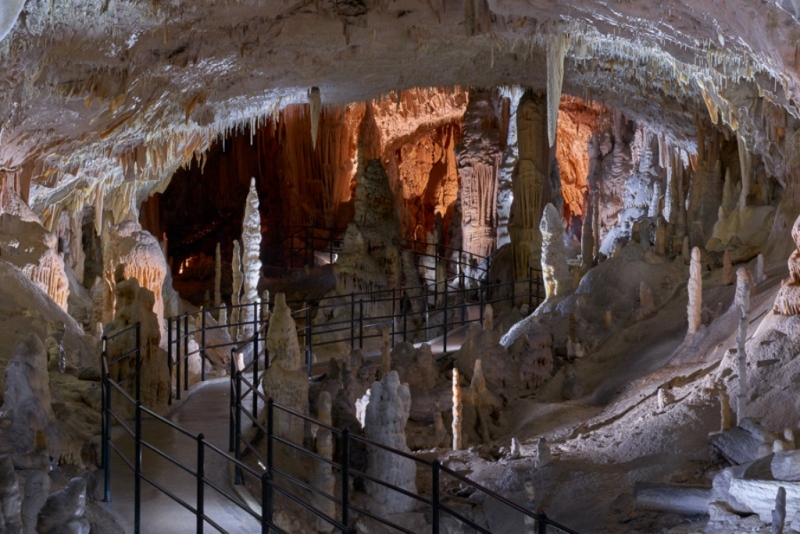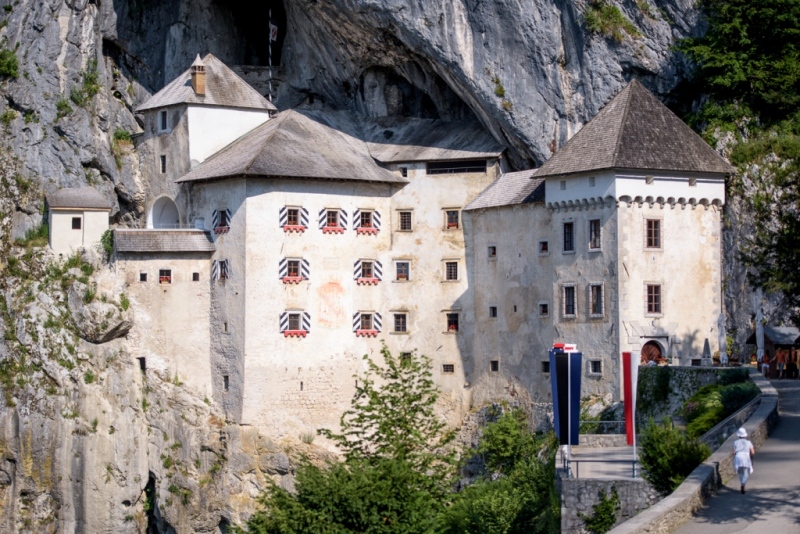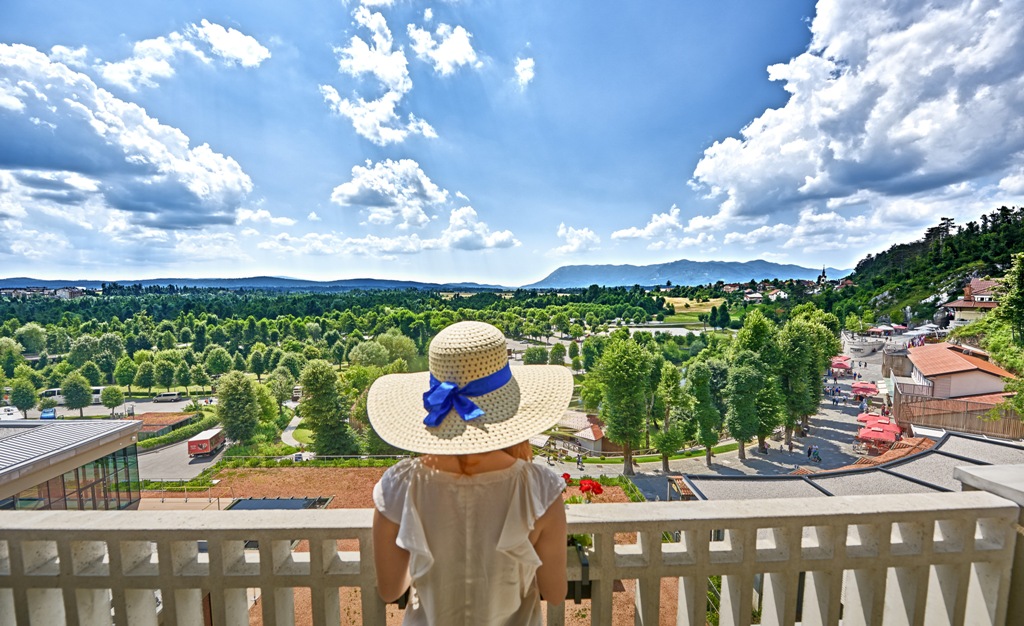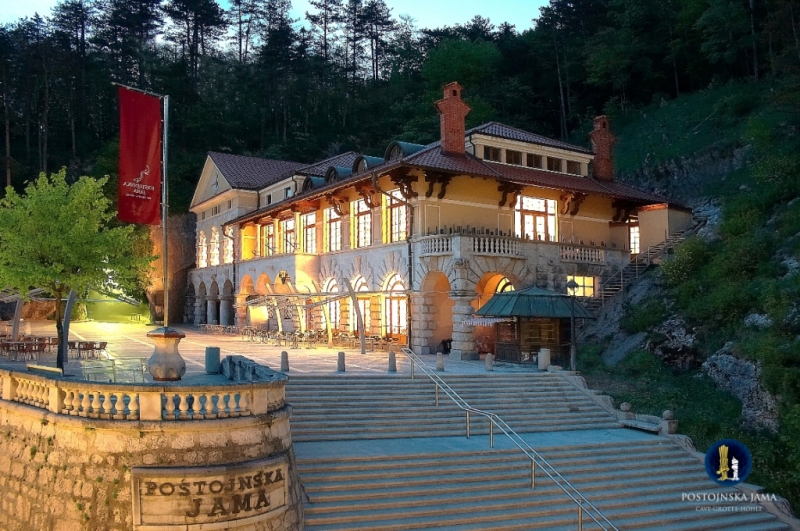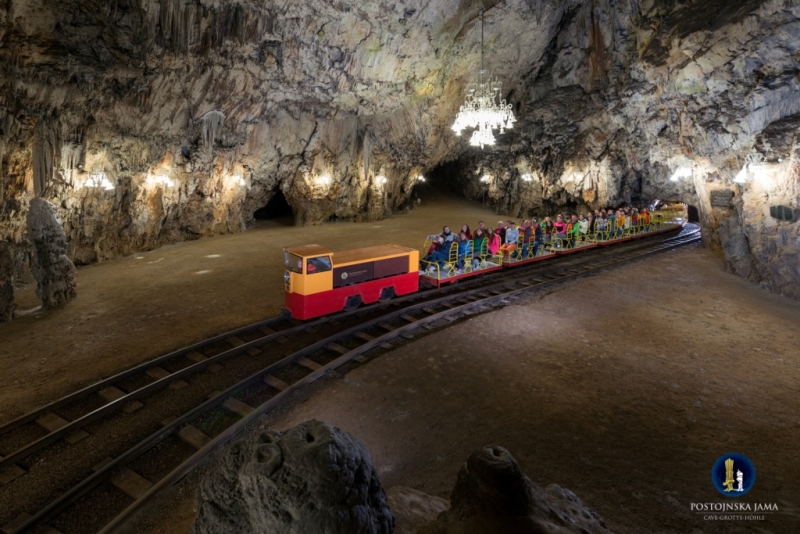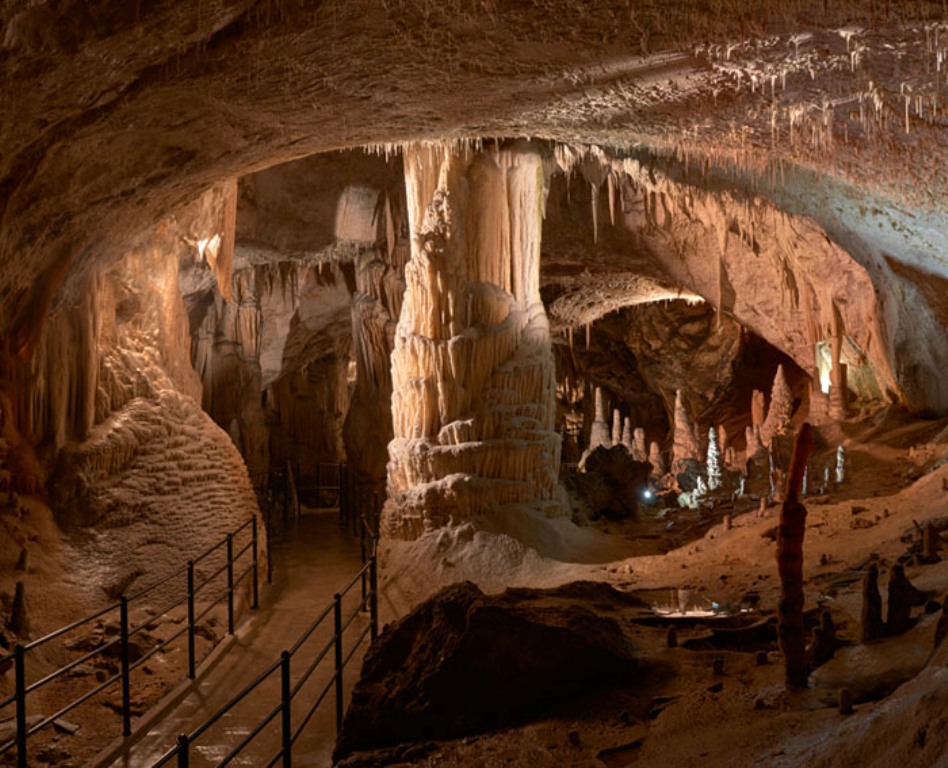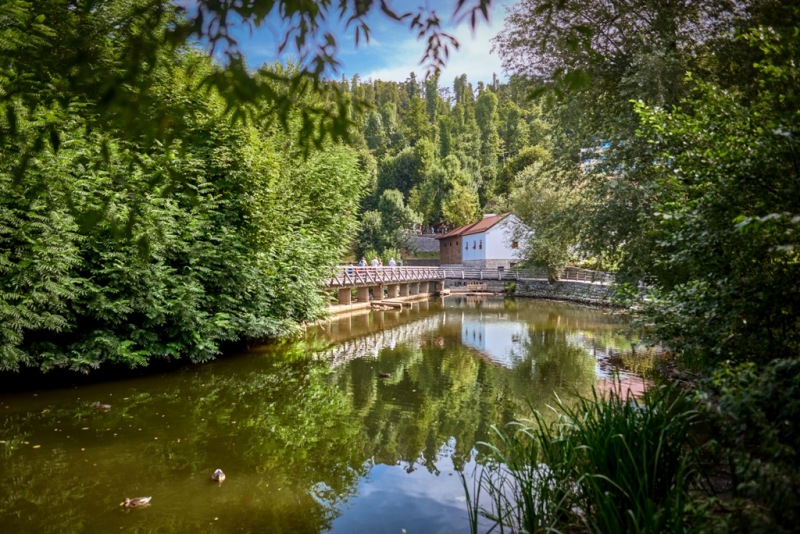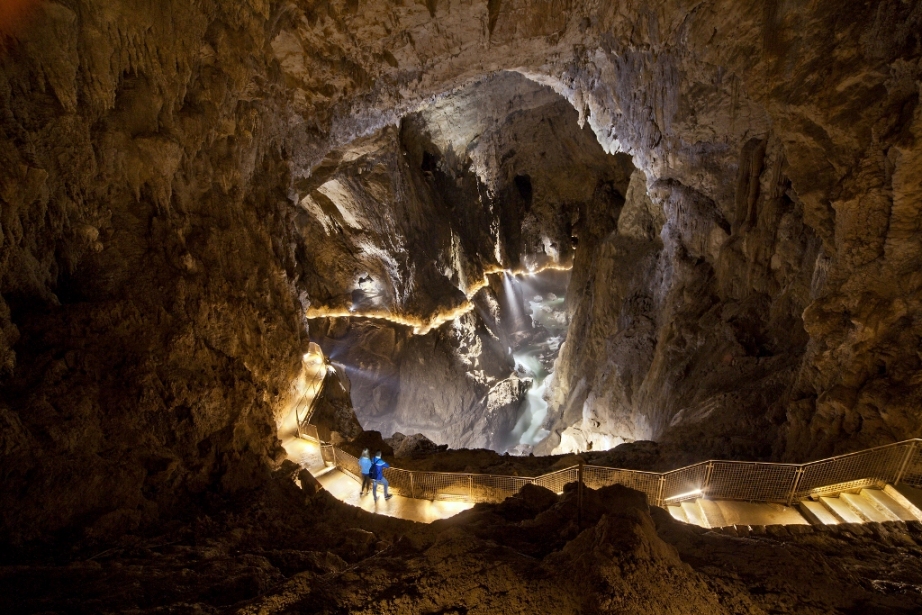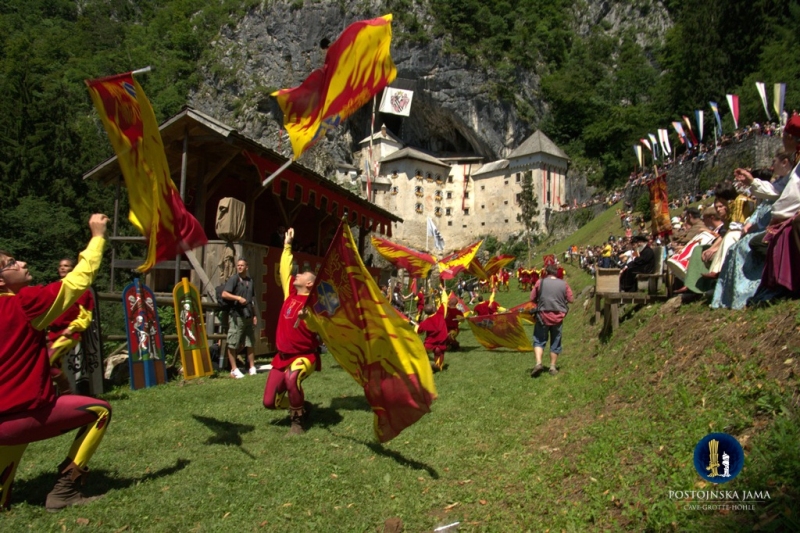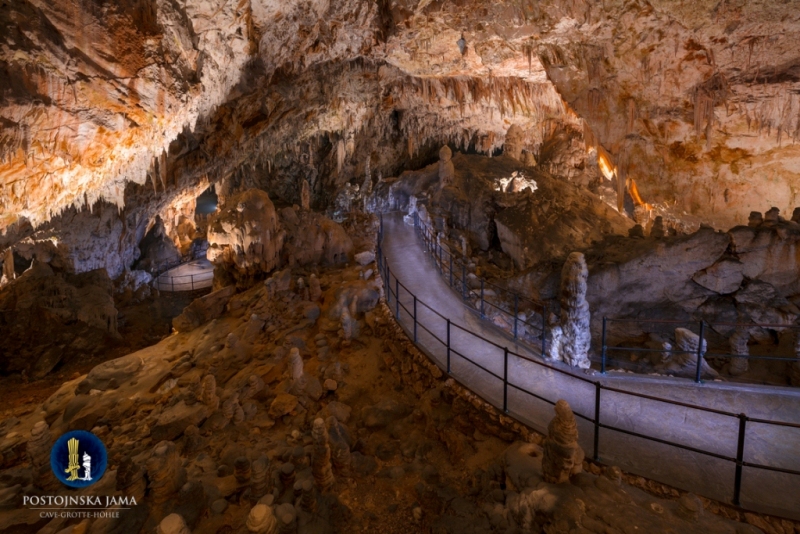Postojna
You are here: Home > Destinations > Slovenia > Postojna
About Postojna
Underground scenery at its finest!
Postojna Jama is a fantastic web of tunnels, passages, galleries and halls; the astonishing diversity of Karst features as well as easy access are certainly the main reasons for its popularity. Postojna Caves are probably the best-known show caves in the world; they are also the greatest tourist attraction in Slovenia and one of the world's largest karst monuments. For 140 years the Postojna Cave was the only public access cave in the world, now it offers a unique and adventurous ride on a special train which will take you into the cave under spectacular underground arches, embellished with chandellier-like stalactites and through a beautiful subterranean world full of playful limestone sculptures. A total of 21km of passages, galleries and magnificent halls offer a unique experience of the underground world. This is the only place in the world where the underground landscape can be traversed on an electric train and where you get to meet this underground kingdom’s most famous inhabitant – the proteus (olm) – up close.
Did you know ?
- the cave railway has existed since 1872 and electric lighting since 1883
- the oldest underground post office in the world has been here since 1899
- among 37 million visitors there have been more than 150 state presidents, kings and emperors
A visit to Postojna Cave starts at the entrance station of the cave railway. The train first passes through an artificial tunnel, built when a double track railway was constructed (in 1964). The first natural tunnel is black and sooty, the consequence of a fuel dump explosion during the second world war. Next comes the Gothic Hall, richly decorated with stalactites and stalagmites, and the Ballroom, for 180 years a venue for events of various kinds. While you are viewing Nature’s sculptures, the train carries you for two more kilometres further into the cave, to the Great Mountain, where you alight and continue your visit on foot. The path leads past the Great Mountain, across the Russian Bridge into the Beautiful Caves, through Spaghetti, White and Red Halls, all the way to the Brilliant Passage, where the most famous stalagmite and symbol of Postojna Cave stands: the Brilliant. The route then leads past the aquarium containing human fish and into the Concert Hall, where you learn about the only underground post office in the world, perhaps buy some souvenirs and then reboard the train and return to the surface. In 1819 Archduke Ferdinand I visited the cave and became the first official visitor. This gave rise to tourism in Postojna and this date is considered the official start of modern cave tourism although graffiti signatures dating from the 13th century can be found in the cave.
A visit to the caves and surrounding attractions in the town of Postojna and countryside can take a very full day or even two days so we recommend, where possible, including a night or two here on your fly drive itinerary or as part of a twin centre stay in Slovenia (combined with Ljubljana or Lake Bled).
Postojna can be reached easily from Ljubljana by means of the motorway, by train or by bus. The Postojna Cave is located just a kilometre from the centre of Postojna town and the car park is a mere 100–300 metres from the entrance to the cave. During the main season, tours are available every hour, whereas outside of the main season, there are three to four tours daily. Each tour lasts approximately an hour and a half; a part of the tour is a cave train ride and part of it is taken on foot. There are admission fees for visitors but there are several types of reasonably priced admission fee packages that can also be purchased online.
A number of different events are held in the Postojna Cave and in its vicinity throughout the year: from a top-quality blues festival to the traditional knight tournament, from the live nativity scenes to concerts held in the subterranean halls.
Also in the area ...
PREDJAMA CASTLE
Predjama Castle reigns over the surrounding area, not far from Postojna, in the idyllic village of the same name. This picturesque, magnificent, defiant, mysterious and impregnable castle has been perched up in the middle of a vertical 123-metre high cliff for more than 800 years. Its romantic appeal is further emphasized by the idyllic Lokva River, which disappears into the underground world deep down below the castle. As the only preserved cave castle in Europe (listed among the Guinness World Records as the largest cave castle in the world), the Predjama Castle offers a unique insight into the building techniques and resourcefulness of people in the Middle Ages, who were looking for and found a safe harbour for themselves right at the entrance into the cave. During a siege that took place in the 15th century, the castle provided a refuge for its best known and most notorious owner - Erazem of Predjama. The legend about the courageous robber baron Erazem, who remained undefeated until one of his servants betrayed him, is still in people’s minds, inspiring and alluring as ever. It was this safe abode of his which helped the brave knight resist the besiegers without much difficulty for more than a year. The karst world with its cave system provides a perfect backdrop for the castle, as well as a hidden passageway into freedom, a source of drinking water, an additional shelter and a space for storing food – everything that turned out to be indispensable, invaluable and crucial during the siege.
JAMSKI DVOREC MANSION
At the entrance to Postojna Cave is the Jamski dvorec restaurant. A whole range of excellent food is available at all times and guests can choose from a wide selection of refreshing drinks, salads and snacks. Sit down to a delicious lunch at a reasonable price or simply enjoy a coffee and something from the selection of cakes in the restaurant garden.
PROTEUS RESTAURANT
The recently renovated Proteus Restaurant was built on the foundations of its glorious past and is a popular choice, it is located less than a kilometre away from the cave in a beautiful, traditional old house typical of the region. Similarly striking is the interior of the restaurant – a combination of modern and ancient features with unique dining booths made of white strings which form a gentle curtain, resembling those inside the cave, together with a priceless collection of Leo Vilhar’s dripstone paintings, create a unique atmosphere.
POSTOJNA CAVE PARK
Relax and enjoy Postojna Cave Park, located around the main site which contains all the facilities of this tourist attraction plus much more such as the Visitor Centre, the Briljant restaurant (consisting of a self-service restaurant, a pizzeria, a café and a pâtisserie), souvenir shops, the Jamski dvorec Mansion and WC facilities, free of charge.
THE MODRIJAN HOMESTEAD
This additional attraction consists of the Lower Mill, a residential building, and a sawmill and is part of the Postojna Cave Park.
PIVKA & BLACK CAVES
The Pivka Cave and the Black Cave are the final two caves along the subterranean Pivka River before the river finally disappears and resurfaces in the Planina Cave. Both caves are beautiful examples of caves along a subterranean river above which the ceiling has collapsed. The entrance into the Black Cave is only gently sloped while the Pivka Cave entrance has vertical walls. The Black Cave features beautiful flowstone formations and the biggest attraction of the Pivka Cave is a stunning view of the river, especially when the water level is high. In the early 1920s an artificial passage was built to link three caves: Postojna Cave, Pivka Cave and Black Cave, thus facilitating access from one to another, primarily for military use rather than for tourist purposes. Nowadays an artificial tunnel allows visitors a special experience - visiting three caves at the same time.
CAVE UNDER PREDJAMA CASTLE
The network of cave passages in Predjama is more than 14 km in length; the passages also cover the area both under and behind the castle and through a hidden passageway that leads from the castle into the free world they stretch above the castle as well. Although the cave is a branched and long one, only the 700-metre long section closest to the entrance is open for regular visitor tours. The cave is inhabited by various different species of bat, which make each cave visit even more special. Since bats are protected, no-one can enter the cave during their hibernation period, so the cave is closed during winter months. The area of the cave closest to the entrance was used as a horse stable in the Middle Ages and this still gives it its present-day name. But this cave section had been used even a long time before that – it is an important archaeological site, dating back to the Stone Age.
We look forward to being of service.
Flexible Tailor-Made Holidays
- We believe passionately that no two holidays should be the same.
- With our flexible tailor-made holiday options you can travel at your own pace.
- Rediscover a city, a resort or an island in a weekend or longer.
- Take a small group tour or embark upon a more adventurous trip.
Trusted Service
- ATOL cover for flight inclusive holidays.
- One of us at Rediscover the World is very likely to have visited the hotels and travelled along the routes on your itinerary.
- Dynamic, comprehensive travel app with all your documents, maps and much more.
- Full financial protection for your holiday (TTA).
Why book Slovenia with us ?
- More than 30 years experience of the region
- Unrivalled expertise of local partner
- Fly-drive holidays in Slovenia & neighbours
- Activity holidays / Family-friendly locations
- Food-themed breaks & Christmas Markets
- 24hr assistance in Slovenia
